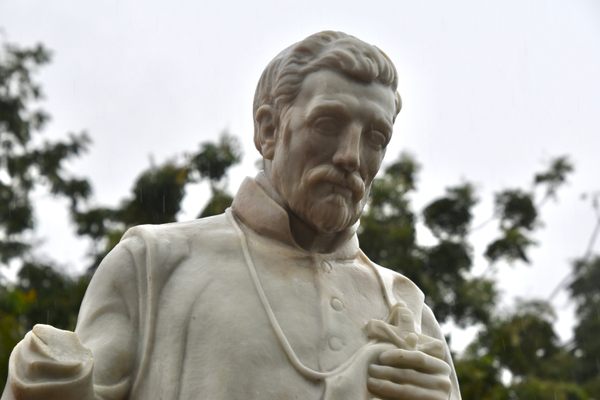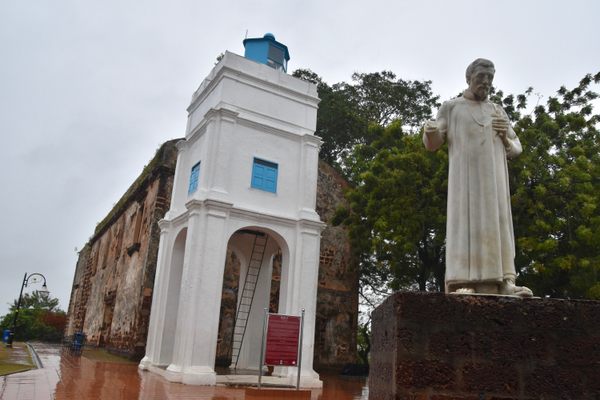About
Saint Francis Xavier’s name is remembered throughout Asia, from India to Japan, where he was the first to introduce Christianity. Born in 1506 in the Kingdom of Navarre, he co-founded the Jesuit Order in 1540 with Ignatius of Loyola and traveled the world as a Catholic missionary.
From 1545 to 1552, the missionary was based on and off in the port of Portuguese Malacca (Melaka), where there now stands a 19th-century church named after him as well as a statue commemorating his visit. He died from a fever while on the way to China, and his body was carried back to Malacca for a temporary burial, before being shipped to Goa, India, in 1553.
The statue was erected in 1952 for the 400th anniversary of his last visit to Malacca. It stands in front of the hilltop ruins of St. Paul’s Church, where there is an open grave marking the site of Xavier’s temporary burial.
An interesting feature of this statue is his missing right hand, an attribute absent in most artistic depictions of the saint. This is because he had all of his limbs intact during his life—his right forearm, which he used to bless and baptize his converts, was only amputated after his death. It is said that it still bled when it was cut off.
While his (mostly) incorruptible body rests in permanent peace in Velha Goa, the detached right hand was sent to Rome in 1614 and remains in a silver reliquary at the Il Gesù church, and portions of the relic are also displayed in Macau and Sydney.
Though that’s the story with his right hand, some locals and tour guides of Malacca have a different version to tell. They claim that the statue did once have both hands in fact, but was struck by lightning one day and lost the right hand, perhaps by divine intervention.
Related Tags
Wild Borneo: Secrets of an Ancient Rainforest
Orangutans, fishing villages & untouched beauty in the Borneo Rainforest.
Book NowCommunity Contributors
Added By
Published
September 21, 2023

























